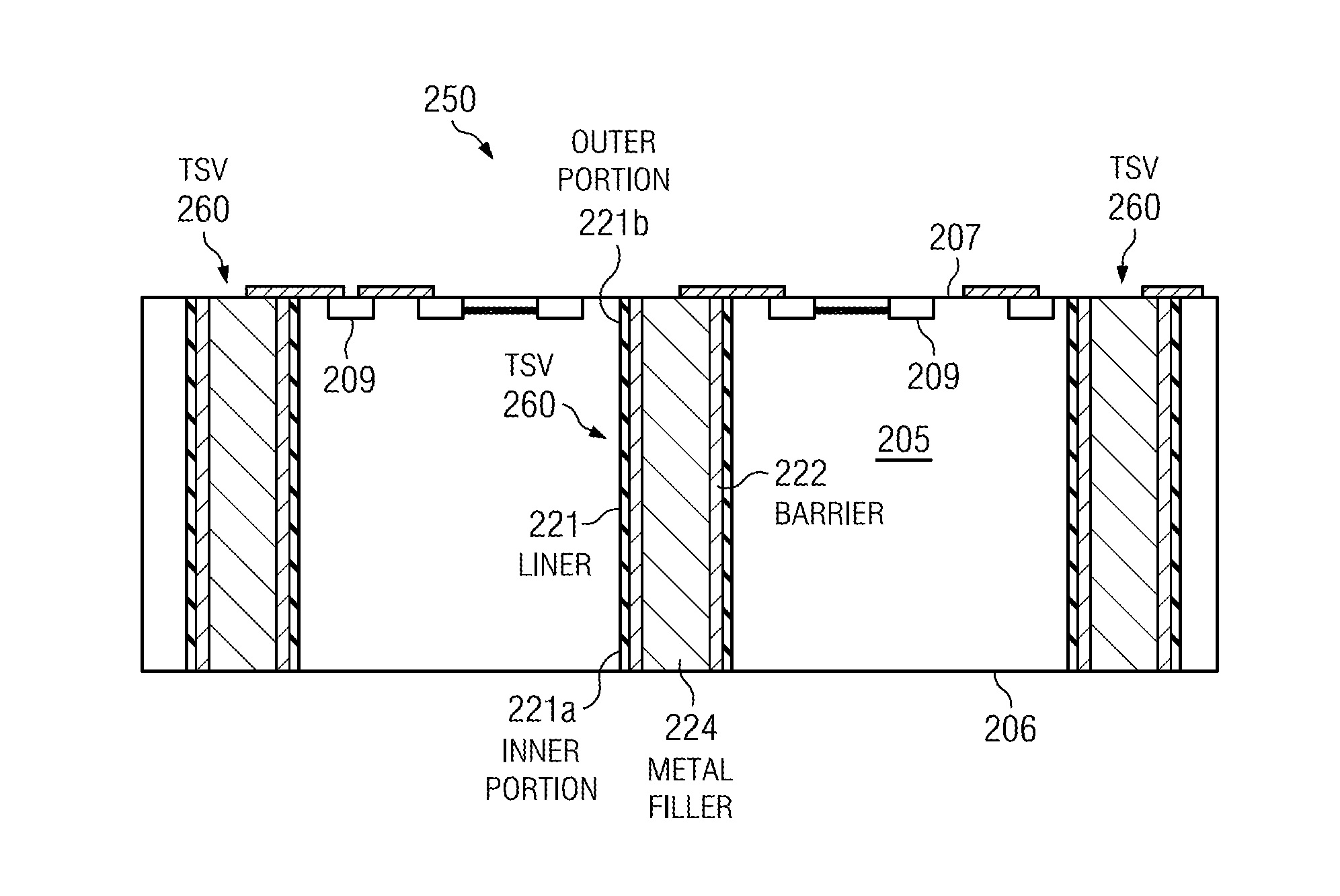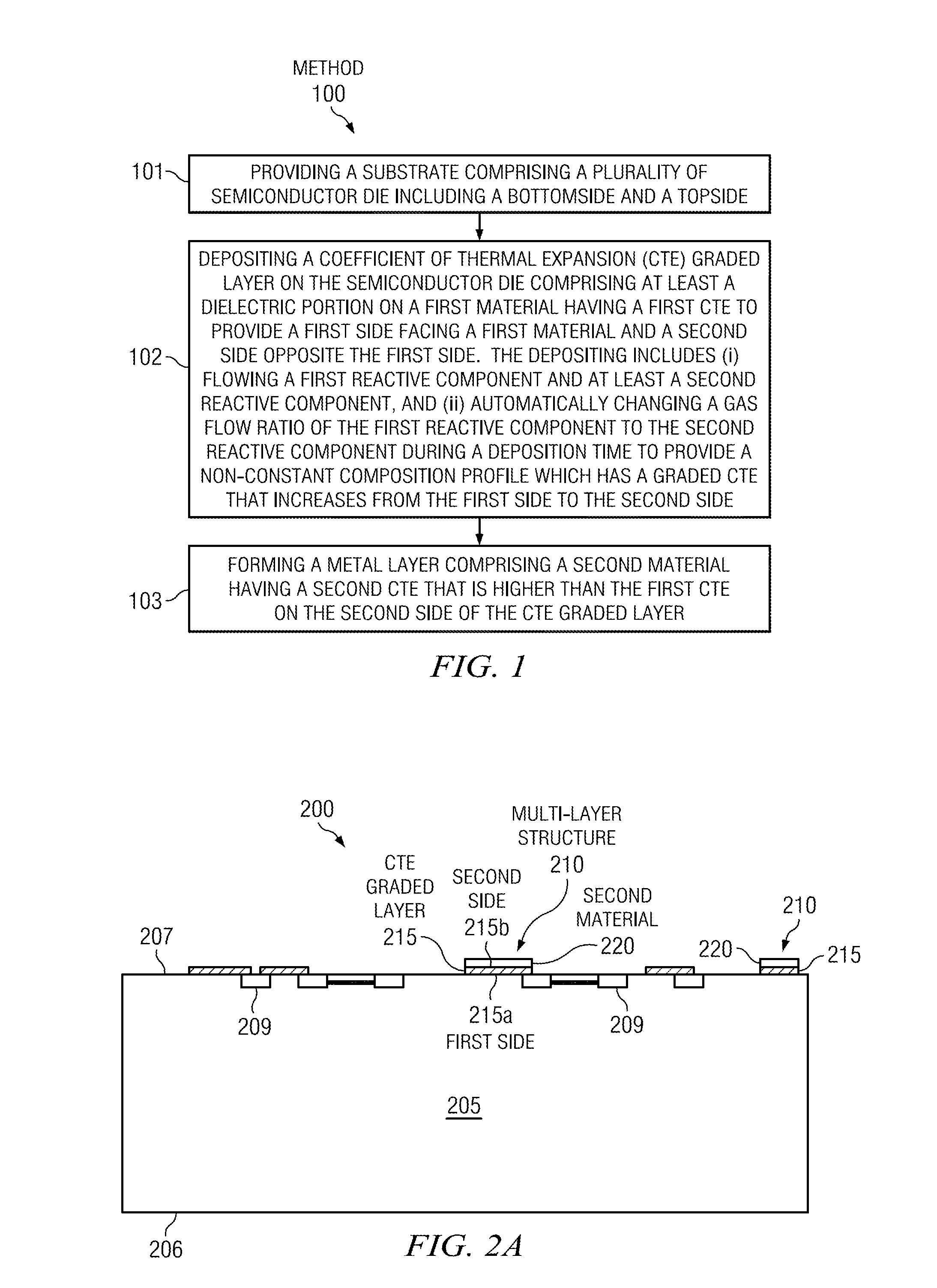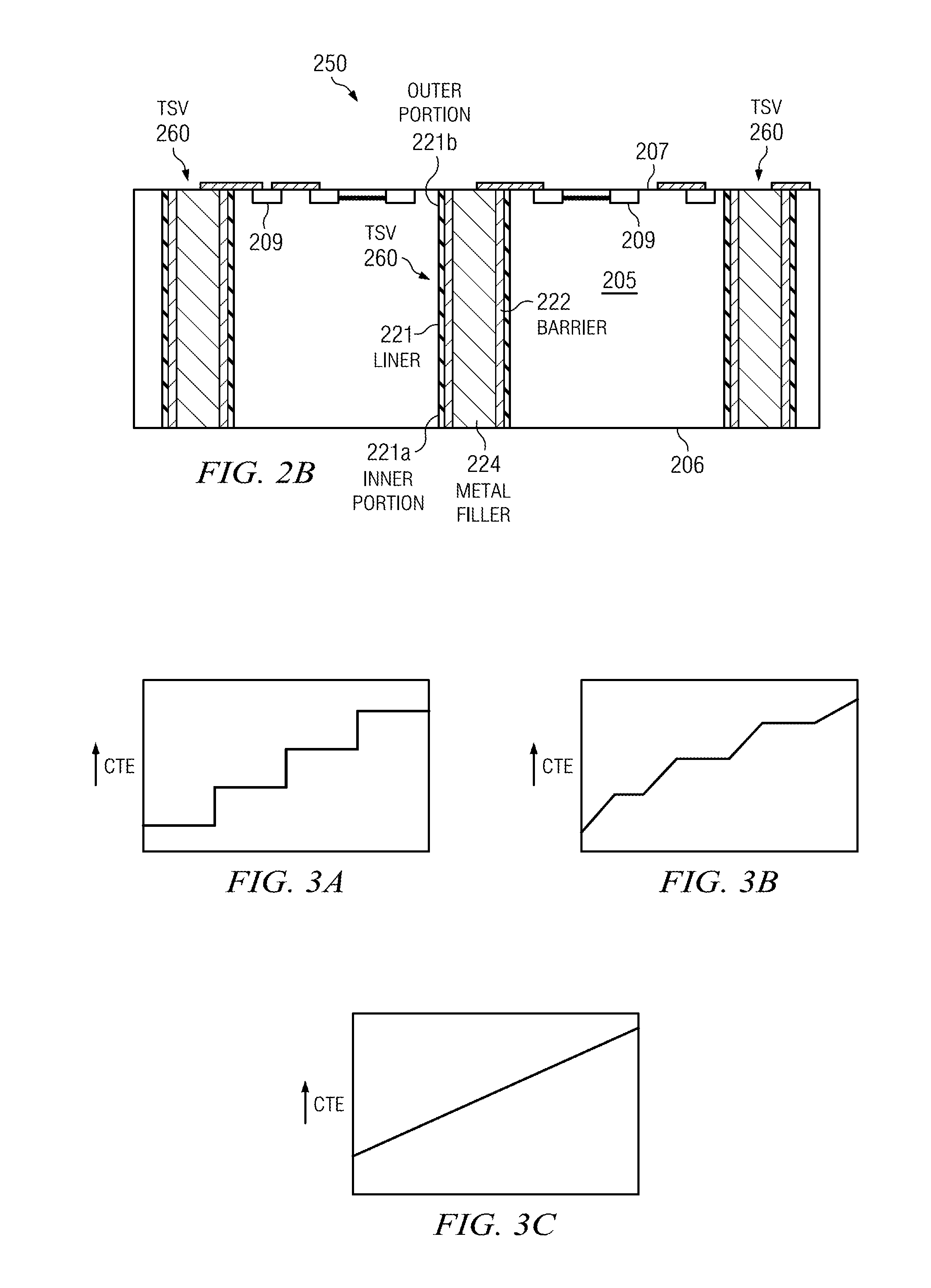Fabricating a semiconductor die having coefficient of thermal expansion graded layer
- Summary
- Abstract
- Description
- Claims
- Application Information
AI Technical Summary
Benefits of technology
Problems solved by technology
Method used
Image
Examples
Embodiment Construction
[0015]Example embodiments are described with reference to the drawings, wherein like reference numerals are used to designate similar or equivalent elements. Illustrated ordering of acts or events should not be considered as limiting, as some acts or events may occur in different order and / or concurrently with other acts or events. Furthermore, some illustrated acts or events may not be required to implement a methodology in accordance with this disclosure.
[0016]Disclosed embodiments include methods of fabricating a semiconductor die including disclosed CTE graded layers. FIG. 1 is a flow chart showing steps in an example method 100 of forming semiconductor die having multi-layer structures including disclosed CTE graded layers, according to an example embodiment. Step 101 comprises providing a substrate (e.g., a wafer) comprising a plurality of semiconductor die including a bottomside and a topside. Once method 100 and the other fabrication steps are completed, the topside will inc...
PUM
 Login to view more
Login to view more Abstract
Description
Claims
Application Information
 Login to view more
Login to view more - R&D Engineer
- R&D Manager
- IP Professional
- Industry Leading Data Capabilities
- Powerful AI technology
- Patent DNA Extraction
Browse by: Latest US Patents, China's latest patents, Technical Efficacy Thesaurus, Application Domain, Technology Topic.
© 2024 PatSnap. All rights reserved.Legal|Privacy policy|Modern Slavery Act Transparency Statement|Sitemap



